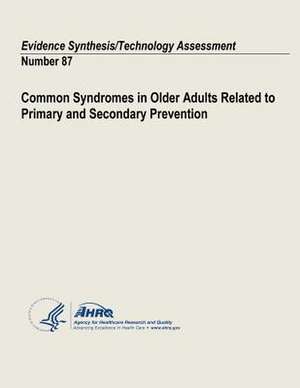Common Syndromes in Older Adults Related to Primary and Secondary Prevention
Autor U. S. Department of Heal Human Services, Agency for Healthcare Resea And Qualityen Limba Engleză Paperback
Preț: 294.58 lei
Preț vechi: 310.09 lei
-5% Nou
Puncte Express: 442
Preț estimativ în valută:
56.37€ • 59.01$ • 46.64£
56.37€ • 59.01$ • 46.64£
Carte disponibilă
Livrare economică 15-29 martie
Preluare comenzi: 021 569.72.76
Specificații
ISBN-13: 9781484117736
ISBN-10: 1484117735
Pagini: 514
Dimensiuni: 216 x 279 x 26 mm
Greutate: 1.18 kg
Editura: CREATESPACE
ISBN-10: 1484117735
Pagini: 514
Dimensiuni: 216 x 279 x 26 mm
Greutate: 1.18 kg
Editura: CREATESPACE
